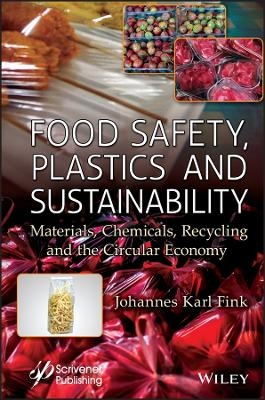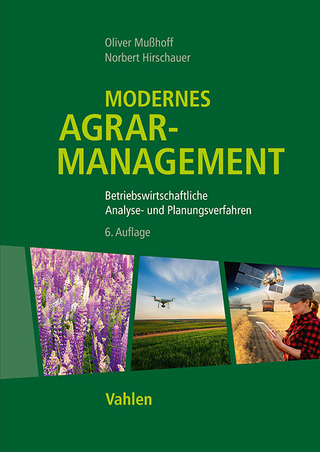
Food Safety, Plastics and Sustainability
Wiley-Scrivener (Verlag)
978-1-394-17456-0 (ISBN)
This book focuses on plastics for food safety, materials, chemicals and methods, as well as the applications of these polymers. The book begins with a chapter on food safety. Here, food security and the issues of migration of substances from packaging into the corresponding food, as well as the impact of microplastics on humans and the environment are discussed. In the next chapter, regulations, standards, and specifications are detailed. In another chapter, testing methods, such as risk assessment, freshness testing of food, and food colorants are discussed. In the chapter entitled “Food Packaging”, the methods that can be used for these issues are given as well as the special materials for food packaging. The chapter on materials includes a discussion on nanocomposites, biopolymers, microplastics, and edible films. This is followed by chapters on additives and applications, such as functional food applications. The final chapter covers the identification of the materials, the methods for recycling, plastic waste generation, and post-consumer polyolefins. Three separate indexes ensure a reader/user-friendly experience.
Audience The book will be used by plastics engineers, chemists, and polymer and materials scientists in academia and the food and packaging industries. Johannes Karl Fink is Professor of Macromolecular Chemistry at Montanuniversität Leoben, Austria. His industry and academic career spans more than 40 years in the field of polymers, and his research interests include characterization, flame retardancy, thermodynamics and the degradation of polymers, pyrolysis, and adhesives. Professor Fink has published many books on physical chemistry and polymer science including 24 books with the Wiley-Scrivener imprint, such as A Concise Introduction to Additives for Thermoplastic Polymers (2009), The Chemistry of Biobased Polymers, 2nd edition (2019), 3D Industrial Printing with Polymers (2019) and The Chemistry of Environmental Engineering (2020).
Preface xi
1 Food Safety 1
1.1 Food Security 2
1.2 Migration of Substances from Packaging 3
1.2.1 Modeling of Migration 4
1.2.2 Sample Pretreatment Methods 6
1.2.3 Special Chemicals 7
1.2.4 Safety of Recycled HDPE and PP 11
1.3 Food Safety and Hygiene 12
1.3.1 Sensors for Amine Detection 13
1.4 Impact of Microplastics on Humans and the Environment 14
1.4.1 Polychlorinated Biphenyl Compounds 17
1.4.2 Polycyclic Aromatic Hydrocarbon Compounds 17
1.4.3 Organochlorine Pesticides 21
1.4.4 Carcinogens 30
1.5 Methods of Food Packaging 42
1.6 Recycling Safety 58
References 58
2 Regulations 67
2.1 European Strategy for Plastics 67
2.2 Basic Principles of Packaging 68
2.3 Colorants and Optical Brighteners 68
2.4 Non-intentionally Added Substances in Food Contact Material 69
2.4.1 Analysis Methods 71
2.5 Recycling 74
2.5.1 Recycled Plastics in Food Packaging 74
2.5.2 Planning and Decision-Making Process 76
2.5.3 Mechanical Recycled Plastics 76
2.6 Standards 77
2.6.1 Gloves 78
2.6.2 Specifications for Compostable Plastics 78
2.6.3 Containers for Packaging of Liquid Foodstuffs 79
2.6.4 Williams-Landel-Ferry Equation 79
References 80
3 Testing Methods 83
3.1 Risk Assessment 84
3.2 Antimicrobial Packaging 84
3.3 Food Colorants 96
3.3.1 Milk Freshness Testing 101
3.3.2 Meat Freshness Testing 102
3.3.3 Fish Freshness Testing 103
3.4 Standards 103
3.4.1 Odor and Taste Transfer from Packaging Film 106
3.4.2 Annealed Aluminum and Aluminum-Alloy Foil for Food Contact 106
3.4.3 Detection of Leaks in Packages 107
3.4.4 Changes in Sensory Attributes 111
3.4.5 Irradiated Food Contact Materials 112
3.4.6 Oxygen Headspace Analysis 114
References 114
4 Food Packaging 121
4.1 Automated Method 121
4.2 Multilayer Packaging 126
4.3 Flexible Packaging 127
4.4 Multicomponent Package 129
4.4.1 Barrier Films 134
4.5 Chlorine Dioxide Gas-Releasing Package 140
4.6 Sustainable Food Packaging 142
4.7 Ventable Food Packages 142
4.7.1 Ventable Microwave-Safe Food Package 142
4.7.2 Self-Venting Microwave-Safe Food Package 143
4.7.3 Smart and Active Food Packaging 143
4.8 Packages for Pourable Food 146
4.9 Food Storage 149
4.9.1 Trays 149
4.9.2 Storage Container 151
4.9.3 Storage System 154
4.10 Special Materials for Food Packaging 156
4.10.1 Film-Forming Biodegradable Classes 156
4.10.2 Cytotoxicity 158
4.10.3 Microwavable Food Packaging Materials 160
4.10.4 Film-Forming Materials 161
4.10.5 Antimicrobial Biodegradable Food Packaging 164
4.10.6 Multilayer Films for Food Packaging 170
4.10.7 Bilayer Film with Dihydromyricetin 170
References 174
5 Materials 191
5.1 Nanocomposites 191
5.1.1 PVC/Ag Nanocomposites 192
5.1.2 Montmorillonite Clays 193
5.1.3 Graphene Nanoplates 197
5.1.4 Carbon Nanotubes 197
5.1.5 Micro- and Nanoplastics 197
5.2 Biopolymers 198
5.2.1 Proteins 199
5.2.2 Gelatin 203
5.2.3 Storage Polymers in Bacterial Cells 207
5.2.4 Bio-Based Nanocomposites 208
5.2.5 Starch 209
5.2.6 Dry Heating Treatment 210
5.2.7 Thermoplastic Starch 210
5.2.8 Modified Starch 211
5.2.9 Starch-Based Foams 212
5.2.10 Residual Starch from Potato 213
5.2.11 Cellulose 213
5.2.12 Biodegradable Polymer Reinforced with Cellulose Nanocrystals 214
5.2.13 Cellulose Nanofibrils 221
5.2.14 Chia Seeds 224
5.2.15 Poly(lactic acid) 226
5.2.16 Poly(hydroxyalkanoate)s 227
5.2.17 Poly(hydroxybutyrate) 229
5.2.18 Poly(caprolactone) 230
5.3 Microplastics 231
5.3.1 Microplastics in the Environment 232
5.3.2 Microplastics in Food 233
5.3.3 Microplastics in Agroecosystems 234
5.3.4 Release of Microplastics 235
5.4 Single-Use Materials 235
5.5 Edible Films 236
5.5.1 Poly(saccharide)s 236
5.5.2 Cellulose 238
References 239
6 Additives 255
6.1 Chemical Additives 255
6.1.1 Hazardous Metal Additives 259
6.2 Mathematical Models 262
6.3 Evaluation of Models 264
6.4 Plastic Additives by Swelling 264
6.5 Fatty Acid Amide 277
6.5.1 Plasticizers 277
6.5.2 Antioxidants 277
6.5.3 Monomers and Oligomers 278
6.5.4 Light Stabilizers 278
6.5.5 Slip Additives 278
6.6 Perfluorinated Compounds 279
6.7 Toxic Materials in Plastics 284
6.8 Aflatoxins 284
6.8.1 Sorbents for Aflatoxin 285
6.9 Migration of Additives from Plastics into Food 286
6.10 Marine Environments 287
6.11 Surfactants 288
6.12 Salting-Out Agents 289
6.12.1 Determination of Food Stimulants 289
6.12.2 Determination of Biogenic Amines 289
6.12.3 Liquid-Liquid Microextraction 290
6.12.4 Determination of Aromatic Amines 292
References 296
7 Applications 303
7.1 Glaze-Like Coatings 303
7.2 Functional Food Applications 306
7.2.1 Fructan 306
7.2.2 Zogale 306
7.2.3 Garcinia indica 307
7.2.4 Mulberry Plants 309
7.2.5 Citrus Seeds 310
7.2.6 Vine Tea 310
7.2.7 Anti-Stress Drugs 316
7.2.8 Microalgae 318
7.2.9 Phenolics 318
7.2.10 Liposomes 319
7.2.11 Diacylglycerol Functional Oil 319
7.3 Prevention of Oxidation 320
7.3.1 Photo-oxidation 320
7.3.2 Lipid Oxidation 322
7.3.3 Natural Antioxidants 322
7.3.4 Extraction Methods for Natural Antioxidants 330
7.4 Heterocyclic Aromatic Amines in Prepared Food 339
7.5 Radiation-Curable Compositions 341
7.6 Antimycotics 344
References 347
8 Recycling 357
8.1 Identification of the Materials 359
8.1.1 Spectroscopic Methods 359
8.1.2 Real Time Mass Spectrometry 359
8.1.3 Optical Identification 360
8.1.4 Chemical Safety Aspects 361
8.1.5 Migration of Contaminants 364
8.1.6 Migration of Plasticizers 366
8.1.7 Migration of Aluminum and Silicon 366
8.2 Recycling Methods 367
8.2.1 Delamination 367
8.2.2 Separation 369
8.2.3 Mechanical Recycling 369
8.2.4 Selective Dissolution 372
8.2.5 Dissolution-Reprecipitation Technique 372
8.2.6 Compatibilization 374
8.2.7 Feedstock Recycling 374
8.2.8 Closed-Loop Recycling 375
8.2.9 Supercritical Ethanol 377
8.3 Post-Consumer Polyolefins 377
8.3.1 Predictive Models 377
8.3.2 Safety Concerns 378
8.3.3 Multilayer Composites 380
8.3.4 Recyclability Enhancement of Food Containers 384
8.4 Plastic Waste Generation 384
8.5 Recycled Plastics in Food Contact 385
8.5.1 Improving Safety and Quality 385
References 385
Index 391
Acronyms 391
Chemicals 394
General Index 404
| Erscheinungsdatum | 01.08.2023 |
|---|---|
| Sprache | englisch |
| Gewicht | 826 g |
| Themenwelt | Technik |
| Wirtschaft ► Betriebswirtschaft / Management | |
| ISBN-10 | 1-394-17456-X / 139417456X |
| ISBN-13 | 978-1-394-17456-0 / 9781394174560 |
| Zustand | Neuware |
| Informationen gemäß Produktsicherheitsverordnung (GPSR) | |
| Haben Sie eine Frage zum Produkt? |
aus dem Bereich


